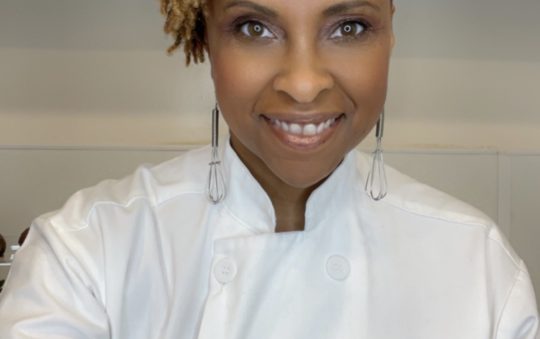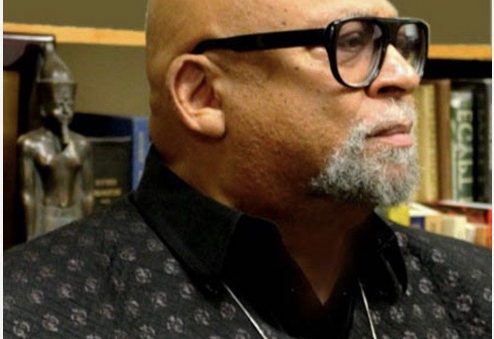
Sierra Jenkins, a former news assistant for CNN and reporter with the Virginian Pilot newspaper, was headed for the peak of her career. Her colleagues praised her for her journalistic acumen and her respect for reporting excellence.
But when her editor tried to call her to assign her to cover a shooting on March 19 last year, he could get no answer. Way out of character for this young journalist, known for her professionalism and accountability, there would be a reason for her non-response that would shock the world. Sierra Jenkins, 25, was one of the victims of the very shooting that her editor sought her to cover.
As her phone rang, she lay dead outside a pizza restaurant, felled by a bullet shot during an argument over a spilled drink. She was not involved in the dispute and the bullet was never intended for her. Nor was it intended for 25-year-old former high school honor student and football linebacker Devon Harris, also killed in the gunfire that night. The news devastated the community, their co-workers, family, and friends.

Fifteen months later, a few miles away, 18-year-old Shawn Jackson, also a promising young African American, having just graduated from Huguenot High School 30 minutes earlier, lay dead outside Richmond’s Altria Theatre alongside his stepfather, Renzo Smith, a U. S. Army veteran. Both were killed by bullets from a gun wielded by a 19-year-old man who targeted the two men, according to police.

Whether the shootings were unintended or criminally intended for their victims, coast to coast – Black people are disproportionately dying, being wounded by or mentally suffering from gun violence. According to the CDC, the leading cause of death among America’s Black children and young adults ages 1-44 is homicide by firearms.

Amidst this crisis, sociologists, Black mental health experts and medical workers say one thing is certain: The travesty has taken its toll on Black mental health – largely through fear, stress and grief – while the gun industry is reaping billions of dollars.

“The volumes of guns are now so high that many people just use a gun to solve conflict when even that person might have tried something different in the past,” says psychiatrist Rahn Kennedy Bailey – chairman of the department of psychiatry at Louisiana State University in New Orleans. “Our streets have been flooded with guns, a lot of guns. Where people have always had conflicts and had to resolve it in different ways, now they might grab you and shoot you.”

An NBC News analysis of CDC data from the U.S. Centers for Disease Control and Prevention says, “More Americans have died from gunshots in the last 50 years” than in all of the wars in American history. “Since 1968, more than 1.5 million Americans have died in gun-related incidents. By comparison, approximately 1.2 million service members have been killed in every war in U.S. history, according to estimates from the Department of Veterans Affairs and iCasualties.org.”
Everytown.org, a gun violence prevention organization, reports that Black people “experience 12 times the gun homicides, 18 times the gun assault injuries, and nearly 3 times the fatal shootings by police of White Americans.”
The disparate impact on the Black community is not new. It has been long known by experts that African-Americans – just as in the cases of most other tragic social statistics – bears the brunt of the pain of gun violence physically, mentally and emotionally; even indicating that gun violence dramatically affects educational outcomes such as test scores.
A study led 20 years ago by Hampton University Professor Zina T. Mcgee, concluded that “Studies based on children raised in communities in which violence occurs have shown that direct encounters with violence (either as a victim or witness) increase the likelihood of experiencing anxieties, depression, social withdrawal, and difficulties in concentrating.” Based on information collected from African-American youth “residing in areas plagued with violence and crime,” McGee’s 2003 study states that “With regard to social class, research indicates that low socio-economic status serves as one of the many environmental factors that can contribute to the use of violence to resolve conflicts.”
Dr. Valda Crowder, director of Emergency Medicine at the University of Pittsburgh Medical Center in Harrisburg, Pennsylvania witnesses the carnage up close on a regular basis. And it’s gotten so bad that while treating victims; she and other medical professionals must also protect themselves.
“Many emergency departments now have armed guards because there have been threats against emergency medicine physicians, nurses, and hospitals. There have been actual shootings where emergency medical physicians were killed,” Crowder said in an interview. “So many now have armed guards as a result of the increased threats. Many also have machines that you have to go through just like the airport and metal detectors.
Crowder is among those struggling to end the carnage. Among a list of unique initiatives to end gun violence include the following:
- Crowder recalls how the historic photo of the mutilated body of Emmett Till, published in JET magazine, stunned the world and has been credited with sparking the modern day civil rights movement. Crowder believes that same kind of stunning moment could work again by placing on display bodies that have been mutilated by gun violence. “In 1955, the open-casket funeral of Emmett Till drew international attention to the savagery of Jim Crow segregation, spurring a national civil rights movement,” Crowder wrote in an op-ed early this year. “Now almost 68 years later, we must ‘do something’ to stop the gun violence. Opening the casket of someone who was shot by an assault rifle in a mass shooting may be the shock the nation needs..”
- U. S. Rep. Bobby Scott, who held a “Gun Violence Prevention Roundtable”, in 2019 following an incident in which 13 people were killed in a mass shooting, listed a string of Virginia killings and gun injuries near the area where Sierra Jenkins and Devon Harris were killed. “We have evidence available to show that affective policies can reduce these shootings,” Scott says. “When they are implemented, background checks work. Every day, background checks stop nearly 250 dangerous individuals from being handed a firearm. However, these same people can go to a gun show and purchase a firearm without any background check.
- Scott says an assault weapons ban must be instituted because “the only thing that assault weapons are good for is killing many people quickly.” to protect people, he said.
- After a rash of mass shootings, including the racist killings of 10 people at a Buffalo, New York grocery store by a 19-year-old White man, the U. S. House and Senate finally passed a historic bi-partisan gun bill that was signed into law by President Joe Biden on July 11 last year. The first significant gun legislation in more than 30 years, it includes enhanced restrictions on gun ownership by people convicted of certain violent crimes; including domestic abuse. But it still fails to include restrictions on large bullet magazines. In fact, a similar racist killing of three Black people in Jacksonville, Florida recently on August 26 was by a 21-year-old White man who reportedly bought the AR-15-style rifle legally.
“The respect for life, how your parents raised you matter. If you believe human beings are valuable you wouldn’t shoot someone at all let alone shoot them for a non-violent offense,” Bailey said. “But in many shootings now that are not self-defense or life or death, people are said to have a beef over something that’s non-violent and the person escalates it to violence by grabbing a gun and shooting someone.”
Parents, teachers and school officials could be in on this training in conflict resolution, Bailey says.







